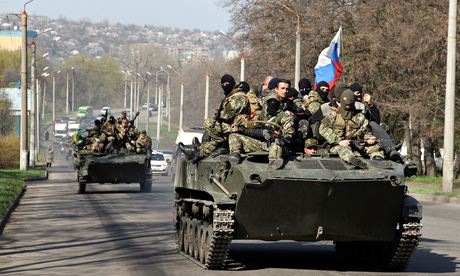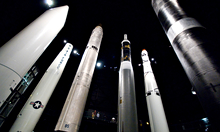
US Army special forces with troops from the Central African Republic and Uganda, in Obo, Central African Republic. (AP Photo/Ben Curtis)
If you want to know what US forces are doing in Africa, it helps to be connected to a large engineering or construction firm looking for business.
This article originally appeared at TomDispatch.com.
By Nick Turse
Beaver County Peace Links via The Nation
What the military will say to a reporter and what is said behind closed doors are two very different things—especially when it comes to the US military in Africa. For years, US Africa Command (AFRICOM) has maintained a veil of secrecy about much of the command’s activities and mission locations, consistently downplaying the size, scale and scope of its efforts. At a recent Pentagon press conference, AFRICOM Commander General David Rodriguez adhered to the typical mantra, assuring the assembled reporters that the United States “has little forward presence” on that continent. Just days earlier, however, the men building the Pentagon’s presence there were telling a very different story—but they weren’t speaking with the media. They were speaking to representatives of some of the biggest military engineering firms on the planet. They were planning for the future and the talk was of war.
I recently experienced this phenomenon myself during a media roundtable with Lieutenant General Thomas Bostick, commander of the US Army Corps of Engineers. When I asked the general to tell me just what his people were building for US forces in Africa, he paused and said in a low voice to the man next to him, “Can you help me out with that?” Lloyd Caldwell, the Corps’s director of military programs, whispered back, “Some of that would be close hold”—in other words, information too sensitive to reveal.
The only thing Bostick seemed eager to tell me about were vague plans to someday test a prototype “structural insulated panel-hut,” a new energy-efficient type of barracks being developed by cadets at the US Military Academy at West Point. He also assured me that his people would get back to me with answers. What I got instead was an “interview” with a spokesman for the Corps who offered little of substance when it came to construction on the African continent. Not much information was available, he said, the projects were tiny, only small amounts of money had been spent so far this year, much of it funneled into humanitarian projects. In short, it seemed as if Africa was a construction backwater, a sleepy place, a vast landmass on which little of interest was happening.
Fast forward a few weeks and Captain Rick Cook, the chief of US Africa Command’s Engineer Division, was addressing an audience of more than fifty representatives of some of the largest military engineering firms on the planet—and this reporter. The contractors were interested in jobs and he wasn’t pulling any punches. “The eighteen months or so that I’ve been here, we’ve been at war the whole time,” Cook told them. “We are trying to provide opportunities for the African people to fix their own African challenges. Now, unfortunately, operations in Libya, South Sudan, and Mali, over the last two years, have proven there’s always something going on in Africa.”
Cook was one of three US military construction officials who, earlier this month, spoke candidly about the Pentagon’s efforts in Africa to men and women from URS Corporation, AECOM, CH2M Hill and other top firms. During a paid-access web seminar, the three of them insisted that they were seeking industry “partners” because the military has “big plans” for the continent. They foretold a future marked by expansion, including the building up of a “permanent footprint” in Djibouti for the next decade or more, a possible new compound in Niger, and a string of bases devoted to surveillance activities spreading across the northern tier of Africa. They even let slip mention of a small, previously unacknowledged US compound in Mali.
The Master Plan
After my brush off by General Bostick, I interviewed an Army Corps of Engineers Africa expert, Chris Gatz, about construction projects for Special Operations Command Africa in 2013. “I’ll be totally frank with you,” he said, “as far as the scopes of these projects go, I don’t have good insights.”

 The herbicide was sprayed by the U.S. military as a defoliant to destroy jungle cover for communist troops. Its highly toxic byproduct, dioxin, has been linked to diseases such as diabetes, cancer and birth defects.
The herbicide was sprayed by the U.S. military as a defoliant to destroy jungle cover for communist troops. Its highly toxic byproduct, dioxin, has been linked to diseases such as diabetes, cancer and birth defects. "Beginning today the contaminated soil will be heated to extremely high temperatures to destroy dioxin. After approximately four months the soil will be tested to confirm that the project cleanup goals have been achieved," he said.
"Beginning today the contaminated soil will be heated to extremely high temperatures to destroy dioxin. After approximately four months the soil will be tested to confirm that the project cleanup goals have been achieved," he said.

 Strategic nuclear missiles from the cold war. Photograph: Alamy
Strategic nuclear missiles from the cold war. Photograph: Alamy 


